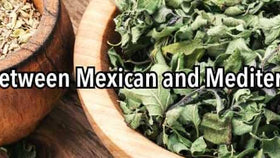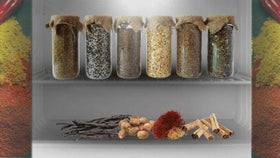How to Make Perfect Vanilla Extract Using FDA Guidelines
How to make real vanilla extract
Vanilla extract is a cherished ingredient known for its ability to elevate the flavors of various dishes and desserts. While store-bought options are readily available, crafting homemade vanilla extract can be a rewarding and cost-effective choice. Not only does it allow you to control the quality of ingredients, but it also ensures compliance with FDA guidelines for a safe and delicious outcome. In this article, we will explore the process of making vanilla extract while adhering to FDA guidelines, guaranteeing a superior product that will delight your taste buds and answer a few of the most common questions along the way.
What is the Best Alcohol to Make Vanilla Extract?
According to FDA guidelines, vanilla extract requires a solution in aqueous ethyl alcohol of the sapid and odorous principles extractable from vanilla beans. The ethyl alcohol content in vanilla extract must be not less than 35 percent by volume. For making homemade vanilla extract, plain vodka is the most commonly used alcohol due to its neutral flavor that won't overpower the delicate vanilla notes. Other suitable options include bourbon, rum, or brandy, as long as they meet the minimum ABV requirements.How is Vanilla Extract Made?
The process of making vanilla extract is simple, and it begins with selecting high-quality vanilla beans. As per FDA definitions, vanilla beans refer to the properly cured and dried fruit pods of Vanilla planifolia Andrews and Vanilla tahitensis Moore. For every gallon of alcohol, approximately 13.35 ounces of vanilla beans containing 25 percent moisture are used. If the beans contain more than 25 percent moisture, the weight should be equivalent to the moisture-free vanilla-bean solids in 13.35 ounces of beans containing 25 percent moisture. For example, if you are using standard extract grade b vanilla beans in making your vanilla extract you will need 0.83-0.90 ounces per cup of liquid. If you are using a gourmet grade A vanilla bean you will need roughly 1.06 -1.1 ounces of vanilla beans per cup.
For many people, this translates to a rule of thumb being one ounce of vanilla beans to every one cup of alcohol. While we agree the one ounce to one cup ratio is great for making smaller batches of vanilla extract, when making vanilla extract at scale and in large batches, you may want to be more precise considering 0.17 of an ounce of vanilla extract is a potential loss of one cup every 5.88 times and a loss of 16 cups of vanilla extract every 94 cups. The choice is yours no matter how strong, weak or right you choose to make your vanilla extract. Our goal at Slofoodgroup is simply to help with a little guidance along the way.
To make the extract, follow these steps:
a. Choose a clean glass container with a tight-fitting lid, preferably a dark-tinted glass bottle to protect the extract from sunlight.
b. Split, chop, or cut the vanilla beans to expose the seeds inside and as much surface area as possible .25 inches to .5 inches should be just fine.
c. Place the vanilla beans in the glass container.
d. For smaller batches, use approximately 24 grams (about 0.8333 ounces) of vanilla beans per cup of alcohol. This is roughly around 7-10 vanilla beans depending on the grade and average length of the vanilla bean.
e. Measure and pour the chosen alcohol over the beans, ensuring they are fully submerged. If you are looking to make double-strength vanilla extract, have a look at our vanilla extract calculator to help with your ratios.
f. Seal the container tightly and give it a gentle shake every several days and allow it to age for a minimum of 90-120 days. Your vanilla extract can certainly age for longer if you want it to but if you shake and agitate regularly it will be just fine in the 90-120 days as mentioned.
Do You Remove Vanilla Beans After Making Extract?
The decision to remove or keep the vanilla beans in the extract is a matter of personal preference and not dictated by FDA guidelines. While some individuals prefer to leave the beans in the extract to continue infusing over time, others may remove them after the initial steeping process. Generally speaking, we do recommend removing and filtering your vanilla extract. Doing so will help your extract have a nice clear dark brown to amber color and not be cloudy from the vanilla bean matter that is floating around otherwise.
Is it okay to reuse your vanilla beans when making vanilla extract?
No, it is not okay to reuse already spent vanilla beans. This is illegal if you try to sell vanilla extract made from spent vanilla beans. You will still be able to smell vanillin from spent vanilla beans because it is impossible to extract everything from the vanilla but that does not mean you will get quality vanilla extract by using them. It is always recommended to use new vanilla beans when making a fresh batch of vanilla extract at home or for resell to consumers.
Is It Worth Making Homemade Vanilla Extract?
Making homemade vanilla extract is worth it. Not only does it provide a superior product, but it can also be more cost-effective in the long run. By using premium vanilla beans, as defined by the FDA, such as Madagascar vanilla beans or extract grade B vanilla beans, you ensure a top-notch flavor in your homemade extract. Additionally, you have the flexibility to adjust the flavor strength by adding more vanilla beans or steeping it for a longer duration.
Which Is Better, Vanilla Extract with or without Alcohol?
As per FDA guidelines, vanilla extract should contain a minimum of 35 percent ethyl alcohol by volume, which serves as a preservative and allows the flavor to intensify and mature over time. While some recipes may call for alcohol-free extracts, they might lack the same depth of flavor and could have a shorter shelf life. Therefore, opting for vanilla extract with alcohol is recommended, especially if you plan to store it for an extended period. It is also worth noting that if it is not made with ethyl alcohol, then it is not considered pure vanilla extract.
Can Homemade Vanilla Go Bad?
Homemade vanilla extract, thanks to its alcohol content, has an exceptionally long shelf life. When stored in a cool, dark place with a tightly sealed lid, it can last indefinitely. In fact, it tends to improve with age, becoming richer and more flavorful over time. Complying with FDA guidelines ensures that your homemade vanilla extract will remain safe for consumption throughout its extended shelf life.
Why you should be making vanilla extract according to the guidelines
Crafting your own vanilla extract using FDA guidelines can be a gratifying and cost-effective endeavor. By following the specified process and using premium vanilla beans and suitable alcohol, you'll create a superior vanilla extract that elevates your culinary creations to new heights. The knowledge of FDA definitions and guidelines guarantees that your homemade vanilla extract will be safe, flavorful, and a delightful addition to your kitchen. So, why not embark on this delightful journey of making your perfect vanilla extract at home?







Slofoodgroup
Author